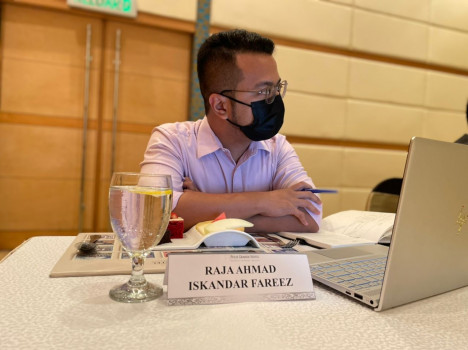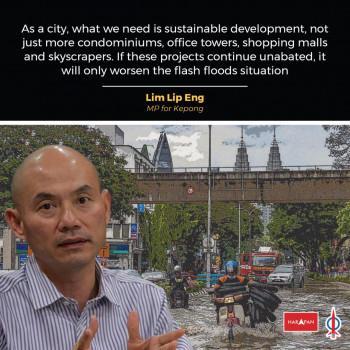by Steven Sim
The past six months had been a roller coaster ride for Malaysians. First, the will of the majority (52%) to have a regime change was denied in the 13th General Election (GE13) tainted by allegations of fraud. Then, Barisan Nasional’s (BN) supporters, and their MPs no less, are getting more and more embarrassed everyday by the inflationary policies of Prime Minister Najib Razak’s government.
Within less than four months after winning one of the toughest general elections UMNO-BN ever faced in the country’s history, the government spilled the bad news, the first of a bout of subsidy cuts. On 2 September, Najib himself announced that petrol price will increase 20 sen. Subsequently, the subsidy cuts, or “rationalisation”, were extended to other items, notably, sugar (up 34 sen), announced during Najib’s budget speech on 5 October, electricity tariff (up 15%) announced on 2 December and effective 1 January 2014, Kuala Lumpur City Hall assessment rate (to increase between 100% to 300%) announced in November to be effective in 2014, and highway toll increase, also to be expected in 2014.
The mother of all these would be the introduction of the goods and services tax (GST), announced by Najib during his budget speech to be implemented 16 months from now on 1 April 2015.
Chickens coming home to roost
What is happening today is clearly chickens coming home to roost for the BN regime.
In the 80s and 90s, under Mahathirism, the regime pursued an economic growth founded on mega projects from making ships to making cars to making big buildings. There were many labels, from industralisation policy to “Look East” to liberalisation to Malaysian Inc. to Vision 2020, but all were under the scheme, the same rent-seeking model where the juiciest parts of the economy went to well-connected individuals and corporations.
However, the private sector had been lackadaisical. Private investment falling drastically from over 30% of the country’s GDP in the 90s to less than 10% by 2007. In its place, the government became a bigger and bigger spender even as the so-called GLCs (government-linked corporations) were touted as private sector corporations.
There was macroeconomic growth to be sure, but prosperity did not reach far enough. By 1990, the top 20% took in more than 50% of the country’s income share while the bottom 40% only had 14.5%, ten years later in 2000, the situation did not change, in fact it worsened slightly against the bottom 40% and by 2009, the top 20% were raking in 51%, the bottom 40% has 14.5% but the middle class were reaping lesser from the economic pie than they did a decade ago. In other words, the majority of Malaysians regardless of race and religion did not benefit much from whatever growth the country was experiencing in the last 30 years.
To avoid massive public discontent, it was important for the regime to ensure that the masses were cushioned from higher cost of living as a result of all the growth around them. Subsidies were dished out directly and indirectly not only to feed the rentiers, but also to ensure prices of major items were kept artificially low to placate the masses. That Malaysia is a net exporter of petroleum since the 70s of course helped to ensure the regime has access to seemly bottomless pocket to fuel this subsidy system.
As a result, today, we are a nation both addicted to and burdened by our culture of subsidy. Despite the cut, the regime’s subsidy cost is still high, at RM39.4 billion, or 20% of the 2014 federal budget.
Decades of mismanagement and the regime’s rentier economy also led to the lack of efficiency, low productivity and high cost in the public delivery system, lack of innovation in the private sector and rampant corruption. These, and the burgeoning economic gap mentioned above surely vindicate federal minister Idris Jala’s apocalyptic prophecy of Malaysia being a bankrupt state by 2019.
Thus, the Najib administration’s harsh austerity drive is but the haunting of the ghost from UMNO-BN’s past. Najib has no choice, especially not after his expensive GE13 campaign which lasted for a full five years since his appointment as Prime Minister in 2009.
What can we expect in 2014?
In the 20 months succeeding the 13th General Election in May this year, Malaysians are faced with three waves of major economic inflation.
The first wave is what we are experiencing the last six months, beginning with the petrol price increase in September followed by the sugar price increase in October.
The second wave which is probably more severe than the first will start from January 2014 with the increase in electricity tariff, toll hike, implementation of the minimum wage policy as well as the anticipated further reduction in fuel subsidy. The second wave will also see the effect of QE tapering in the USA which may result in a short-term drop in demands from the global economy.
Finally, the third wave which will take place 16 months from now upon the implementation of the GST on 1 April 2015.
The Malaysian Employers Federation has also warned of lower salary increment and lower bonus in 2014 for private sector workers.
Despite government officials’ repeated assurances, including the absurd guarantee that there will be zero to minimal price increase, it is not difficult to see that Malaysians in general should be braced for a tough year ahead.
Apa lagi rakyat mahu?
The famous words of Ayatollah Khomeini must be ringing in BN leaders’ mind bending on finding a justification for all the broken promises of GE13: the revolution is not to bring down the price of watermelons.
Therefore, despite the first wave and the approaching second wave of price inflation, the government busied themselves fighting boogeymen, from communists to christians to shiites to “groups trying to topple the government”.
Finally, just two days before the end of 2013, and after much pressure, no less from civil society and the opposition, the Prime Minister announced 11 belt-tightening measures by the government, including a 10% ministerial entertainment allowance cut, an obvious sign of desperation to pacify Malaysians who are getting angrier by the day.
As much as we would like to believe Najib’s sincerity, these however are only superficial measures. Why cut the 50 ringgit toll facility for civil servants when billions are being wasted through a non-transparent government contract award system? Airline downgrade for civil servants may be good in times like this, but what about ministers and their spouses jetting around the world on hundreds of millions of taxpayers money? Why talk about buntings and nasi lemak and kueh and teh susu served during government events but not about the government procurement process which led to billions of ringgit being wasted annually on “overpriced” items.
The rot started from three decades of failed governance, hence any fix must also begin there, within the government itself. In the end, it boils down to the need for institutional reforms, in particular to improve delivery, plug leakages and curb corruption.
If UMNO is to save Malaysia, before weaning the people from the bad economic habits nurtured through the years, the ruling party should first wean itself from its addiction to constantly dip into the cookie jar. Yes, austerity was not a choice for Najib. But his mistake was to start with the already hard-squeezed regular Malaysians instead of his own lavish government and party, the source of the problems we face today.



